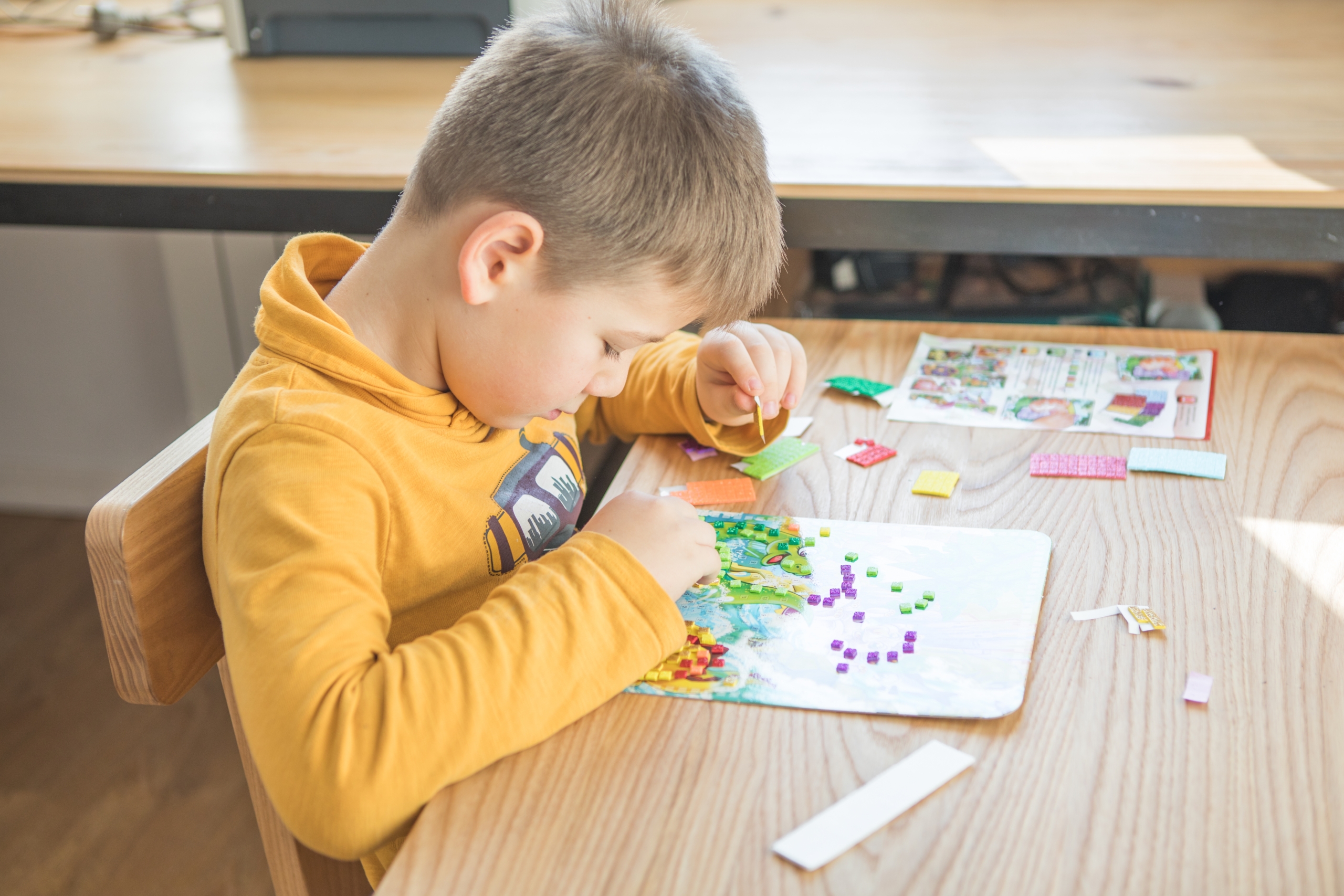Many parents struggle to let go and play with children because of the mess and potential risk child-led play can create. Here we discuss why these two pillars of productive play are worth the stress and hassle.
It starts the very first day you get them home from the hospital. Nappies need changing, and bottoms need cleaning; bibs are covered in food and need washing. You must treat your child carefully: support their head, check they’re warm enough at night and ensure bottled milk and the midday sun won’t burn them. Then they age and your priorities change, but the work is constant. Still dirty nappies, but now dirt and food everywhere and toy cupboards pulled out onto the floor and unattended crayons eaten, and that’s not to mention them trying to pull cabinets on themselves, pet strange dogs and climb huge staircases.
Sorry if any of this is a bit too close to home, but it’s a good place to start any discussion about why we sometimes don’t allow enough mess and risk during our children’s playtime… we’ve spent our children’s entire lives training ourselves to see them as the enemy. And yet mess and risk are essential for effective play, and vital for ensuring our children develop.
Here we discuss why they’re so important, and how you can engage with them without having a nervous breakdown.
Being comfortable with mess
It should only take one glance at our family play activities to realise why mess is so vital for effective play, as each of these activities are, well, messy.
Modelling dough, water play, nature, food, junk, mud… They all involve things that ooze, stain and squelch. But there’s a good reason… Another way of describing squelchy-ness is to say that the materials are flexible, which allows our children to exercise their creativity in a way that isn’t possible with more rigid toys cast in metal or plastic – letting them make shapes, mounds or even huge messes that they’ve defined themselves.
The materials’ responsiveness to touch also allows our children to learn about different sensory experiences – including those that allow them to soothe themselves. Or, as our Child and Family Support Worker Sarah puts it: “Messy play encourages children’s sensory development by encouraging children to experience through touch, sense and feel”.
And, despite how mud tramped over the floor might feel to us, mess actually allows children to explore cause and effect and their own impact on the world around them in a very low consequence way. But that doesn’t mean you have to like it!
“Messy play encourages children’s sensory development by encouraging children to experience through touch, sense and feel”.
Here are some ways to cut down on the amount of clean-up required:
- Consider doing water play in the bath or sink. That way at the end you can simply pull the plug.
- Put down a large sheet or tarpaulin on the floor (top tip – great for gathering up LEGO) or even roll out a sheet of old wallpaper for them to sit and draw on.
- Water painting is a great way to encourage mess with zero consequences. On warm days you can use water to “paint” on walls and the floor and then watch as, magically, it evaporates and cleans itself!
- Make the clean-up part of the game! This takes a little bit of good selling on the part of the grown-up but children can be convinced to race to pack things away and clean up if you’re enthusiastic enough about it.
- Sometimes the best way to deal with a problem is to avoid it entirely. Go to the park or out in the garden and then it doesn’t matter how much mess they make – just get everybody to leave their dirty clothes at your front door-step and keep your home pristine!
Feeling happier about risk
Ah, risk. We know… it’s SO unintuitive but risk is important for ensuring our children develop the skills they need to survive in the world. It’s a bit like learning to swim… Most parents don’t like the feeling of letting go as their child enters the pool for their first swimming lesson and it can be fraught with worry. As parent Anna says: “I worried about it because there was (quite rightly in my opinion) a culture of not even being allowed poolside during the lesson. “But not being next to them holding their hand was like the opposite of what you’re used to doing at age three or four”
However, ask yourself this… Though lessons can be stressful would you prefer to risk children not being able to swim the first time they encountered deep water? Of course not. It’s the same with risk in play – our children are learning to navigate the world around them in a safe, supervised space. Parent Leanne is employed in a nursery and says her job gives her a different perspective.
She said: “I love risk! Children need to find their feet and understand what’s dangerous so they naturally know when to stop when they’re older, and it’s better for them to find out and explore risk under your supervision.
“Children need to find their feet and understand what’s dangerous so they naturally know when to stop when they’re older, and it’s better for them to find out and explore risk under your supervision”.
“My son, for example, would always climb a tree much higher than my daughter would, and always be able to come back down, while my daughter wouldn’t go more than two branches – they have the ability to judge for themselves and, if you’re not careful, you can make them nervous because of your nervousness… But it is yours, and not theirs”.
To summarise: Humans learn best by doing, and if we do it for them then they’re not doing it, so let them do it! And, if that doesn’t convince you, it’s worth considering that recent research shows that engaging in play involving an element of risk also protects our children against anxiety and depression.
But that doesn’t mean it’s easy. Here are some good ways to loosen the strings:
- As much as we might worry about our children falling down the stairs, it’s actually quite a controlled environment, with most stairs having rails on both sides. Children will naturally want to try and navigate stairs themselves from around 9 months onwards and, when they do, let them have as much freedom as you can. You can always hover just in front ready to catch them should they put a foot wrong.
- Consider using real crockery in imaginative play, and avoid plastic plates once children are at pre-school age. Yes, some WILL get broken (so we’d keep the plates you were saving for the Antiques Roadshow in the cupboards), but this is a great opportunity to teach children about cause and effect.
- When you’re doing play involving food with pre-school-age children, let them chop up a real carrot or tomato using a blunted knife. It’s very difficult to cut yourself with one of these knives, but it raises the stakes enough that children will develop their focus and fine motor skills.
One of the most important aspects of risk is risk assessment, so be sure to talk to your children about what they’re planning and what might be required.
In our pre-schools children will sometimes suggest they need a hard hat or protective clothing for a task, for instance, which we have to hand (full disclosure – some of the children just like wearing a hard hat!).
Child and family coordinator Rachel said: “We take children through the nature of risk – so, for example, we might ask a child who is trying to climb to a higher surface by stacking boxes how high it can get without it becoming unsafe. “We get them to talk through the process and identify their own risk”.

Mess and risk can be challenging and we know that supporting play can be difficult. That’s why over the summer we’re sharing practical guidance from our child development experts on creating engaging play spaces and fun, simple, low-cost activities that the whole family can enjoy. Check out our Creating Happy Memories hubpage to find out









